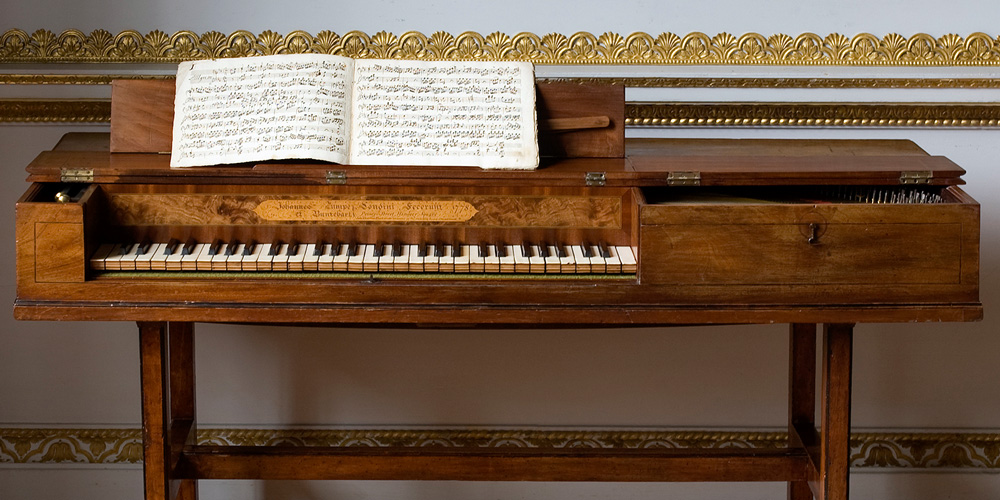
Overview
This instrument survived in a family house in a village near Saint-Germain-en-Laye where Johann Christian Bach went in August 1778. He had arrived there to stay with the duc de Noailles, the maréchal of Saint-Germain, who was one of the most important musical patrons in France. We know of Bach’s visit to Saint-Germain from a letter that Mozart wrote to his father. On his way through Paris, Bach had renewed his acquaintance with the younger composer, then in mourning for his mother, and shortly after, it seems, generously suggested to de Noailles that Mozart should come out for the day. Mozart must have made a good impression, as he stayed for nearly three weeks.
At this date, French piano-building was in its infancy, the instruments in Paris being mostly imported from London, and Bach clearly thought it necessary to bring a London instrument with him. He might have been asked to do so by the duc de Noailles, for in at least two instances Bach is known to have received requests from friends – Denis Diderot and Madame Brillon, a pupil – to choose a London piano for them. In both cases, he selected one made by Zumpe. Bach signed his name on the soundboard of this piano, almost certainly when he chose it in the makers’ workshop.
It is most probable that this piano was present whilst the two composers were guests of the duc de Noailles. It would have been used for much of the music-making described by Mozart and may well have been used by him for an early, if not the first, performance of his great piano sonata K.310 in A minor, which he had just composed.
The maréchal was clearly on good terms with the town, for when the Revolution came, instead of his house being sacked it was merely confiscated and immediately leased back to him on terms from which his sons could benefit after him. It was not until the 1840s when a new road was planned to run through the centre of the building that the contents of the house were dispersed and the building partially demolished. Miraculously, the duc de Noailles’ beautiful Salon de Musique, in which this historic week of music took place, survives in one of the fragments of the Hotel de Noailles still standing on either side of a street in Saint-Germain.
The instrument shows considerable evolution in size and fullness of sound from the earlier instrument by Zumpe.
Listen
J.C. Bach – Variations from Sonata in G, Op. 5




